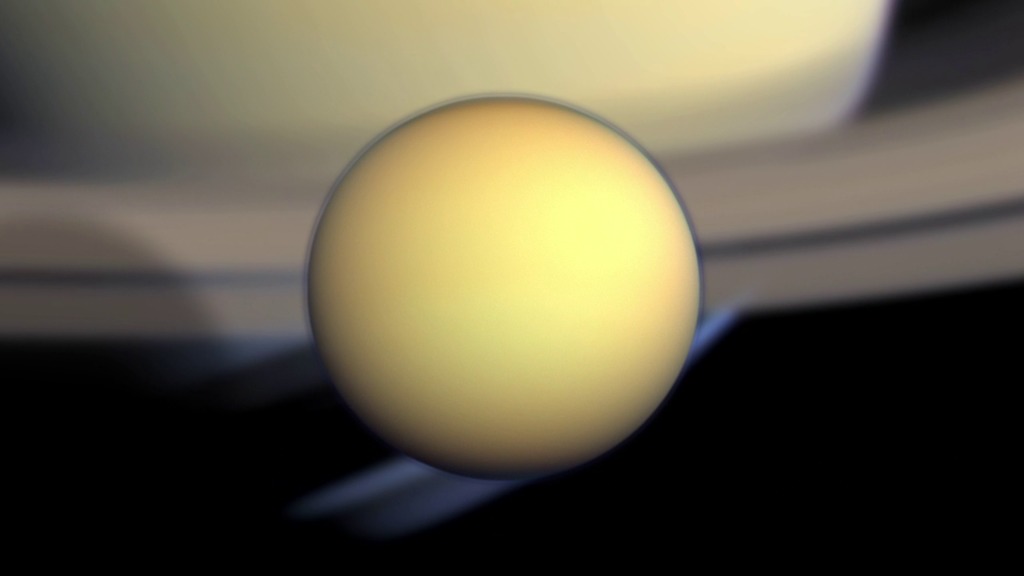Crude Matter
What do car bumpers and computer speakers have in common? Both can be created from raw materials found on Earth or on Titan, Saturn’s largest moon. Titan is the only moon in the solar system with a significant atmosphere. In some ways its atmosphere is similar to Earth’s, but rather than being rich in oxygen, it’s rich in hydrocarbons—chemical compounds made of the elements carbon and hydrogen. In 1980, NASA's Voyager 1 spacecraft flew by Titan and detected different types of hydrocarbons in its atmosphere, including methane, ethane and propane. Now, NASA’s Cassini spacecraft has added one more to the list: propylene, a chemical building block used in the manufacture of plastic consumer goods. Watch the video to learn more.

An ingredient of everyday plastic is discovered on Saturn’s moon Titan.
Watch this video to find out how NASA's Cassini spacecraft detected propylene in Titan's atmosphere.

Hydrocarbons are what make Titan's atmosphere appear hazy.

On Titan, hydrocarbons form clouds, rain down on the surface and accumulate in lakes.

Propylene (bottom row, center) is one of many hydrocarbons found on Titan.
For More Information
See NASA.gov
Credits
Please give credit for this item to:
NASA's Goddard Space Flight Center
Titan image courtesy of NASA/JPL-Caltech/University of Arizona/University of Idaho
-
Animators
- Ernie Wright (USRA)
- Chris Meaney (HTSI)
- Chris Smith (HTSI)
- Dan Gallagher (USRA)
- John S. Howard (NASA/JPL CalTech)
-
Video editor
- Dan Gallagher (USRA)
-
Interviewee
- Conor Nixon (NASA/GSFC)
-
Producer
- Dan Gallagher (USRA)
-
Scientist
- Conor Nixon (NASA/GSFC)
-
Videographer
- Rob Andreoli (Advocates in Manpower Management, Inc.)
-
Writer
- Elizabeth Zubritsky (ADNET Systems, Inc.)
Release date
This page was originally published on Thursday, November 14, 2013.
This page was last updated on Wednesday, May 3, 2023 at 1:51 PM EDT.
